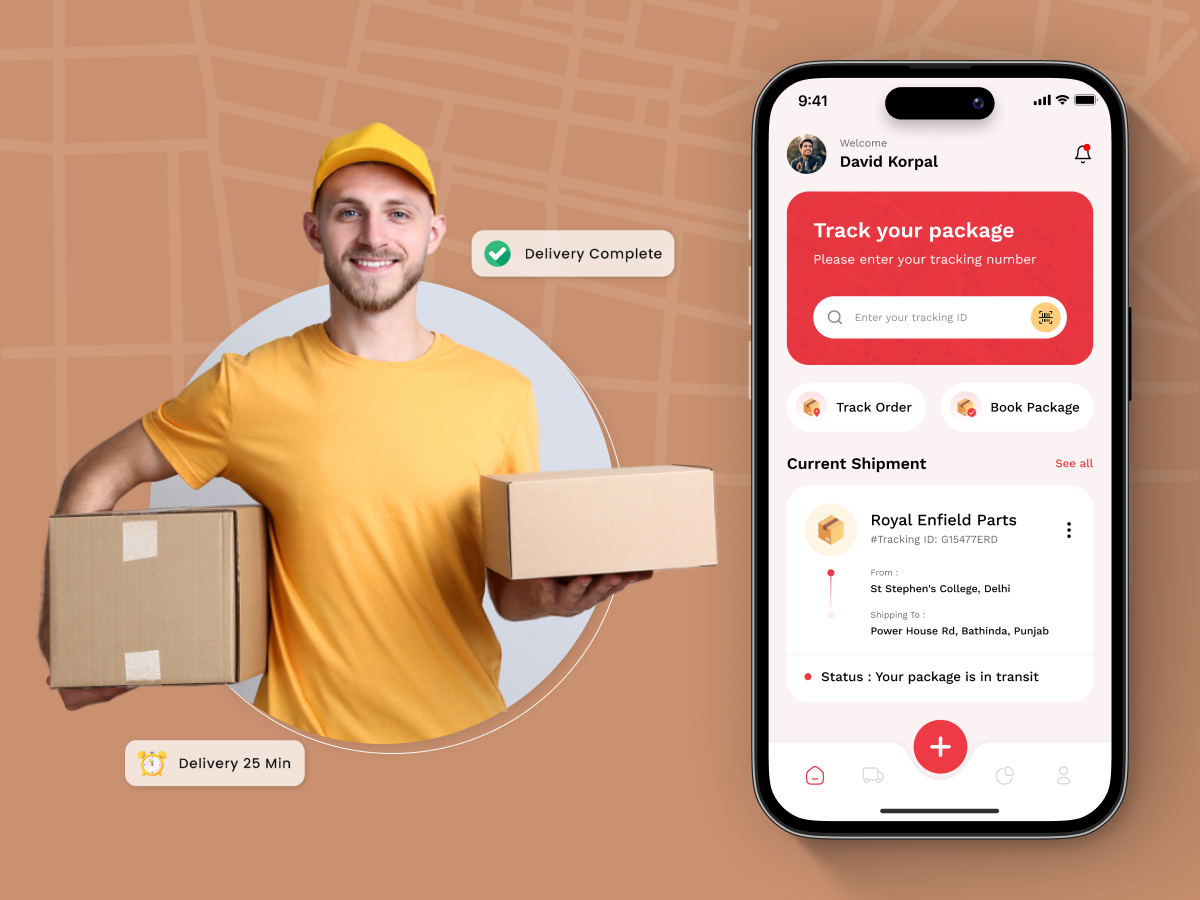The logistics industry is undergoing a massive transformation, driven by technology, rising customer expectations, and the need for faster, more flexible delivery services. In a world where convenience and speed define success, traditional courier operations are no longer enough. Businesses are now turning to on demand courier delivery app development to streamline operations, cut costs, and improve customer satisfaction.
What once required multiple phone calls, manual paperwork, and scattered systems can now be handled from a single mobile app. Whether you’re managing last-mile deliveries, coordinating fleets, or optimizing a warehouse-to-doorstep supply chain, courier delivery apps are revolutionizing how logistics and transportation businesses operate — and compete.
Let’s explore the ways these apps are not just improving delivery, but redefining logistics as a whole.
Real-Time Visibility & Transparency
One of the most significant advantages of an on-demand courier delivery app is real-time tracking. Businesses and customers can now see exactly where a shipment is at any given moment. This visibility builds trust and reduces the volume of “Where’s my order?” inquiries that flood support lines.
Internally, logistics managers gain full control over fleet movement. They can monitor driver locations, delivery status, and route efficiency through a central dashboard. This not only ensures on-time deliveries but also opens the door to predictive planning and faster decision-making.
For modern logistics businesses, real-time data is no longer a luxury — it’s the standard.
Speed, Efficiency, and Flexibility
With instant notifications, intelligent dispatching, and real-time communication, courier apps enable hyper-efficient, flexible operations. Businesses can receive pickup requests, assign drivers, and complete deliveries in minutes rather than hours.
This on-the-go responsiveness is especially critical for industries like e-commerce, pharmaceuticals, groceries, and even B2B logistics, where delays directly impact customer trust and retention.
Thanks to route optimization algorithms, delivery agents can avoid traffic, reduce mileage, and complete more orders in less time. This not only improves delivery performance but also cuts operational costs significantly.
Seamless Integration with Supply Chain Systems
Many logistics companies already use supply chain management software to handle inventory, warehousing, and procurement. When paired with a well-built courier delivery app, the results are powerful.
By integrating courier apps with existing systems, businesses create a closed-loop delivery ecosystem. This allows for automatic syncing of order data, delivery scheduling, and inventory tracking. The app becomes an extension of the business, not just a separate tool.
For companies dealing with high-volume logistics, this kind of integration reduces human error, speeds up operations, and boosts efficiency across the entire supply chain.
Data-Driven Optimization
Courier apps generate valuable operational data, from delivery times and fuel usage to driver behavior and customer feedback. This data, when analyzed, becomes a goldmine for process improvement.
Businesses can use analytics dashboards to:
- Identify delivery bottlenecks
- Measure fleet performance
- Adjust delivery windows
- Monitor customer satisfaction
Instead of guessing what’s working and what isn’t, logistics businesses can make data-backed decisions that lead to measurable growth.
Customization for Different Business Models
Every logistics company is different. Some specialize in local deliveries, others in interstate transport. Some have a small fleet; others manage hundreds of vehicles. That’s why off-the-shelf solutions often fall short.
Working with a professional courier app development company allows businesses to build tailor-made solutions that reflect their operational needs. Whether you need contactless delivery, digital proof of delivery (POD), driver payout management, or customer-facing tracking portals, a custom-built app ensures you have the exact tools your business needs to scale.
Cost Reduction and Scalability
Implementing a courier app reduces manual tasks, cuts phone support hours, and lowers delivery errors — all of which contribute to lower operating costs. Fuel efficiency through route planning, better staff utilization, and automated communication add up to major savings.
More importantly, these apps are scalable. As your delivery volume grows, your app can handle more orders, more drivers, and more features, without the need to hire more admin staff or buy new systems.
For startups and large enterprises alike, on-demand courier apps offer a clear path to profitable, scalable growth.
A New Standard in Logistics
In the past, digital transformation in logistics was considered optional or “nice to have.” That’s no longer the case. On-demand delivery platforms are now essential infrastructure for logistics and transportation businesses.
Whether you’re a courier startup or an established logistics firm, investing in on demand courier delivery app development is one of the smartest moves you can make. It allows you to serve customers faster, operate more efficiently, and stay competitive in an increasingly fast-moving market.
Final Thoughts
Logistics and transportation businesses are evolving rapidly thanks to advances in technology that simplify delivery and streamline operations. Modern digital solutions enable companies to adapt quickly, reduce costs, and unlock new growth opportunities. To remain competitive and meet customer expectations, developing an on-demand courier delivery app is no longer optional—it’s essential for future success.


